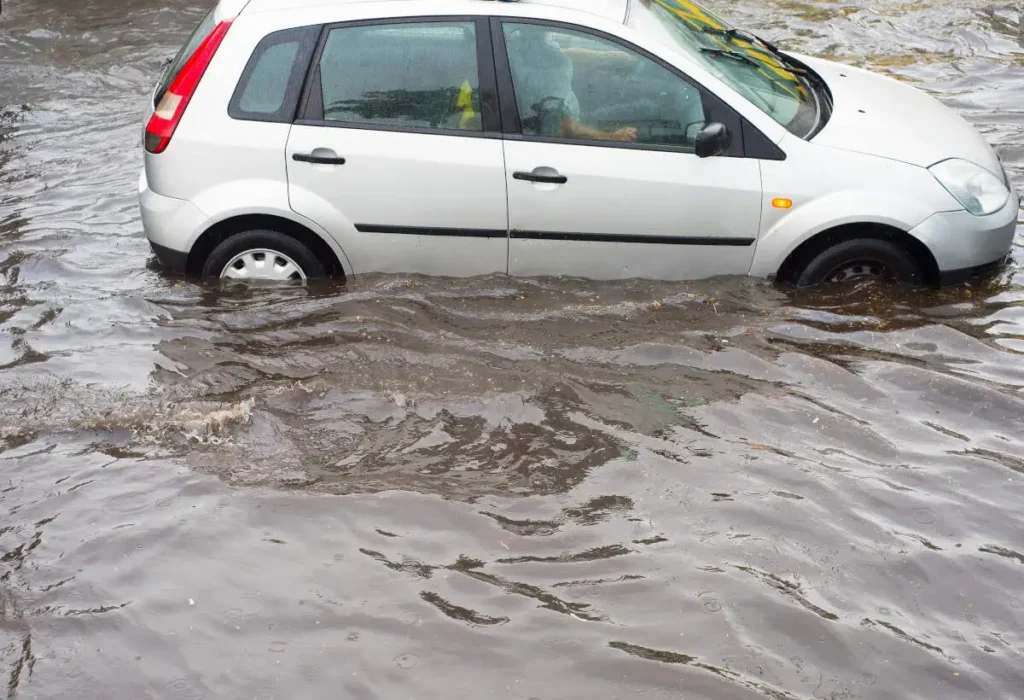How to Start Your Car After a Flood
Floods can cause significant damage to your car, and the process of getting it started after being submerged can be challenging. Water, especially in large amounts, is highly destructive to both the electrical and mechanical components of a vehicle. While it’s natural to want to get your car back up and running as quickly as possible, starting it without taking the proper precautions can result in further damage. This guide will walk you through the essential steps you should take after a flood to ensure that your car is safe and functional.
Flood-damaged vehicles often suffer from electrical system failures, engine problems, and even mold growth. Therefore, before attempting to start your car, it’s crucial to take a step-by-step approach to assess the situation. Rushing into this process can cause more harm than good. Let’s dive into what you need to do.

Index
Assess the Damage
The first thing you need to do after your car has been exposed to floodwaters is to evaluate the extent of the damage. It’s important to note how deep the water reached, as this will determine the likelihood of different parts of your car being affected. A minor flood might only affect the exterior, but if the water reached above the tires and into the cabin, it is much more likely that sensitive parts like the engine, transmission, and electrical systems have been compromised.
Check the Water Line: Look for a visible waterline on the exterior of your vehicle. This will give you a good idea of how much water your car was exposed to. If the water reached the doors or higher, you should be more cautious. A good rule of thumb is that if the water rose above the level of the bottom of the doors, your engine and critical electrical components could be at risk.
Interior Water Damage: Open the doors and inspect the interior. If the carpets are soaked or there’s standing water in the footwells, your car has suffered significant exposure. Water in the interior can also lead to long-term problems like mold, which can be hard to eradicate and may require professional cleaning.
At this stage, if you notice severe water exposure, it’s wise to avoid starting the vehicle immediately. A flood can damage sensitive electrical systems and mechanical components, and turning the key without first checking these systems could cause further damage.
Do Not Attempt to Start the Engine
One of the most common mistakes people make after a flood is attempting to start the car too quickly. If water has entered the engine, trying to start the vehicle could cause hydrolock, a condition where water in the cylinders prevents the engine from turning over properly. Since water doesn’t compress like air, trying to force the engine to run can bend or break key components such as the connecting rods or pistons, leading to significant engine damage.
If there’s any chance that water got into the engine, avoid turning the key until a professional mechanic has had a chance to inspect the engine. Even if your car was only partially submerged, it’s important to take precautions.
What is Hydrolock? Hydrolock occurs when water enters the combustion chamber of the engine. When the piston attempts to compress the water, which doesn’t compress easily, it can bend the internal components of the engine, such as the connecting rods, and cause catastrophic damage. Avoiding hydrolock is one of the primary reasons you should never attempt to start a car after a flood without first inspecting the engine.
Inspect the Electrical Systems
Water and electricity do not mix, and one of the biggest risks of flooding is damage to the vehicle’s electrical systems. Modern cars are full of electronic components, from the battery and alternator to various sensors, computers, and fuses. All of these can be ruined by exposure to water.
Battery and Starter Inspection: One of the first components to check is the battery. If the water level was high enough, the battery might be dead or damaged. Make sure to inspect the battery terminals and surrounding areas for signs of corrosion or debris that may have been washed in with the floodwaters. If you notice significant corrosion, it’s possible that the battery may need to be replaced.
Check the starter as well, since this is an electrical component that’s essential for getting your engine running. If the starter was submerged, there’s a good chance it has been damaged. Attempting to use a water-damaged starter can lead to further electrical problems.
Fuses and Wiring: Fuses are designed to break a circuit when there’s an electrical fault, such as water exposure. Check the fuse box for blown fuses, which can be an indicator of water damage. Additionally, inspect the wiring harness and connectors throughout the vehicle. If these components are wet or show signs of corrosion, they may need to be dried out or replaced before attempting to start the car.
Drain and Dry the Vehicle
If you’ve determined that the car has been flooded but haven’t yet attempted to start it, the next step is to remove as much water as possible. Drying out the car is crucial not only for the sake of the mechanical and electrical systems but also to prevent long-term damage like mold or rust.
Drain the Fluids: Start by checking and draining the essential fluids in your car, including the oil, transmission fluid, and brake fluid. If water has contaminated these systems, it can cause damage when the car is started. Oil mixed with water will appear milky or frothy, so if your dipstick shows this kind of consistency, you’ll need to change the oil immediately. Additionally, check the air filter and air intake for water, as these are common points of entry for floodwater.
Dry the Interior: If the interior of the car was flooded, remove any standing water and thoroughly dry the interior. Remove the carpets and seats if necessary, and use fans or a dehumidifier to dry the cabin. Mold can begin to form quickly after flooding, so it’s important to remove moisture as soon as possible. Ensure that all electrical components inside the cabin, such as the radio, dashboard, and wiring under the seats, are completely dry before attempting to start the car.
Inspect and Replace Components
After ensuring that the vehicle is dry and no longer at risk of electrical short-circuits, it’s time to inspect and potentially replace any components that were compromised by the flood.
Engine and Transmission Inspection: Have a professional mechanic inspect the engine and transmission thoroughly. If water got into these critical systems, it could cause severe damage if the car is started without addressing the issue. For instance, if water has entered the transmission, the transmission fluid will need to be changed before driving the car.
Brakes and Suspension: Floodwater can also affect your car’s braking system and suspension. Water can corrode the brake pads and rotors, making them less effective. Additionally, floodwater may have affected the shocks and struts, which could result in poor handling. Make sure to inspect these components and replace them if needed.
Start the Car Safely
Once you’ve inspected the vehicle and ensured that the engine, electrical systems, and mechanical components are free from water damage, it’s time to start the car. However, you should proceed with caution.
Turn the Key Slowly: When you’re ready to start the car, turn the key slowly and listen for any unusual sounds. If the engine sounds like it’s struggling to turn over or you hear any knocking or grinding noises, turn the car off immediately and consult a mechanic. These sounds could be signs that water is still present in the engine or that damage has occurred.
Monitor for Issues: After the car starts, monitor it closely for any signs of trouble. Watch for dashboard warning lights, unusual noises, or vibrations. Take the car for a short drive at low speeds to ensure everything is working properly, and pay attention to how the car feels. If the steering feels heavy, the brakes are unresponsive, or the car pulls to one side, it’s possible that some components were damaged by the flood and need further inspection.
Conclusion
Starting your car after a flood requires patience and a methodical approach to avoid causing further damage. The key is to assess the extent of the water exposure, refrain from immediately trying to start the engine, and inspect both the electrical and mechanical systems thoroughly. By drying out the vehicle and replacing any water-damaged components, you can reduce the risk of permanent damage and get your car back on the road safely.
Floods can be devastating for cars, but with the right precautions, you can minimize the impact and potentially save your vehicle from more extensive repairs.
